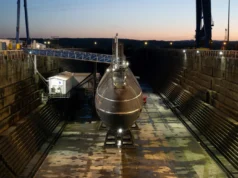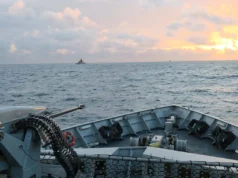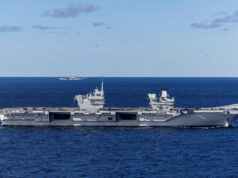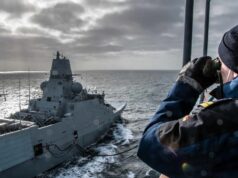Four Royal Navy patrol boats have completed a two-month deployment to the Baltic, working alongside NATO’s newest members in a series of coastal warfare and harbour defence exercises.
HMS Puncher, Express, Pursuer and Dasher of the Coastal Forces Squadron took part in multiple drills across the region as part of Exercise Tarassis, the largest operation yet staged by the Joint Expeditionary Force (JEF).
The JEF, a coalition of northern European nations led by the UK, ran the exercise across land, sea and air. While Royal Marines took part in amphibious landings in Norway and ground operations in Estonia, the Royal Navy’s small P2000-class vessels focused on protecting ports and shipping against fast-attack threats in Latvian, Estonian, Finnish and Swedish waters.
The final phase of the deployment brought the British boats to Berga Naval Base, south of Stockholm, for Exercise Fallex. There they faced off against Sweden’s fast and agile CB90 combat craft, which were designed for operations in the country’s narrow archipelagos. The CB90s, crewed by Sweden’s Amphibious Corps, can reach speeds of up to 40 knots and are armed with heavy machine guns, grenade launchers and automatic cannon.
According to the Royal Navy, the British crews were particularly struck by their Swedish counterparts’ use of non-lethal tactics during close-quarters manoeuvres.
“Fallex was the fifth and final exercise as part of our deployment, which has allowed us to develop the coastal warfare concept and learn from the Baltic states, particularly their patrol and harbour protection expertise,” said Lieutenant Keaton Leyland-Jones, Commanding Officer of HMS Puncher.
Before arriving in Sweden, the vessels operated in Finnish waters with missile boat FNS Hamina, practising joint communications and interoperability following Finland’s accession to NATO. “The communication between us has been great and everything has worked like clockwork,” said Lieutenant Jack Mason, Commanding Officer of HMS Dasher. “I have absolutely no doubt that if the call came for us to work together, we’d be able to do so, really quite easily.”














The smaller RN can’t really carry boats that don’t have a function in event of conflict. When these small boats are replaced in due course, buying something that can be an effective coastal defence/ raiding boat may make sense. It doesnt have to be manned to those levels in peacetime necessarily, so it can potter around doing the basic training/ experience and security jobs the present boats do. But then if needed can be quickly swapped over to being more ‘fighty’ then that seems to make sense to me.
Don’t know what that would mean in practice though in terms of costs/ designs/ fitouts etc
Why these are HMS I have no idea!!! No bloody use at all except to do basic ship handling and navigation. Buy some corvettes much more capable especially with NSM!!!
Dagger and Cutlass cost 4 million apiece. You want to buy some corvettes!? The RN has 16 Archers, replacing them all with Cutlass like vessels would cost 64 million. Corvettes are about 200-400million per ship. So 3.2 billion£.
Yeah no.
Exactly how can these totally unarmed vessels “protect ports and shipping?”